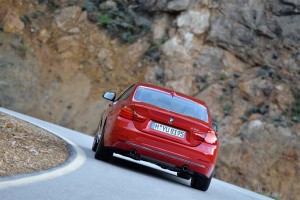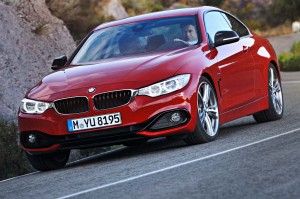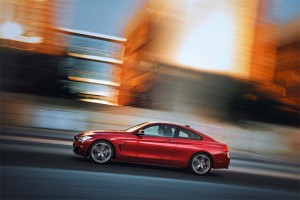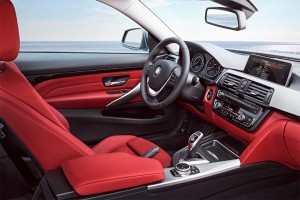You might get a sense of “déjà vu all over again,” as Yogi Berra was fond of saying, checking out BMW’s all-new 4-Series.
Well, yes, the design is new, and so is the name, but the latest addition to the Bavarian maker’s rapidly proliferating line-up is really just a replacement for the old BMW 3-Series Coupe and, to follow, the 3-er Convertible. It reflects the approach first adopted with the 6-Series in which premium 2-door and cabriolet models adopt an even model name, sedans an odd number.
That out of the way, the new BMW 4-Series is a sleek and well-proportioned addition that is getting kudos for a more muscular and well-balanced designed than the old 3-Series Coupe, with a fastback roofline that is clearly reminiscent of the bigger and more expensive 6-Series.
The wheelbase is about two inches longer than the outgoing 3-Series Coupe, the overall length an inch longer. The track has been widened nearly two inches up front and more than three inches in the rear. At the same time, the roofline has been lowered about three-quarters of an inch, one factor why the new coupe has the lowest center of gravity of any BMW model, the maker notes.
The new BMW 4-Series Coupe also is lighter and when paired with a new, more dynamic suspension package, should also enhance the car’s driving dynamics. BMW has given the 4-seater its own distinct tuning, with unique springs, dampers and camber. There’s also a new M Sport version, sort of halfway between the stock 4-Series and the anticipated M4, which will deliver yet stiffer suspension components and settings. The Adaptive M Sport package, meanwhile, is offered as an option on all models and allows the driver to adjust the variable shock dampers.
The production 4-Series is a slightly less exaggerated version of the concept we saw at the Detroit Auto Show last January. But several details were carried over, including the latest take on the twin-kidney BMW grille and something BMW calls “air breathers. Mounted behind the front wheels, they help reduce aerodynamic drag. In fact, even the base 4-Series can match the aero lift of the current M3.
The new coupe’s cabin will, again, strike a familiar chord among those who know the 3-Series, though the rear seat here can handle just two passengers. There’s also a seatbelt feeder that obviates the need for front passengers to grasp and grope for the primary safety device when buckling in.
Options on the 4-Series line include that adaptive M suspension, active cruise control, a head-up display, LED headlights, navigation and additional safety devices.
Power comes from a mix of engines. American buyers will find a 240-horsepower turbocharged inline four in the new BMW 428, while the 435 will opt for a 300-horsepower turbocharged six that can launch from 0 to 60 in 5.3 seconds – about four-tenths of a second faster than the I-4 model.
It’s only a matter of time before BMW introduces the M4. But we’ll have to wait and see if the Bavarians add a version using the new four-cylinder diesel that is joining the 3-Series line-up.

For now, 4-Series buyers will have a choice of two turbocharged gas engines but an M4 is likely to follow. Could a diesel also be in the works?
An 8-speed automatic is standard equipment, though buyers will have a no-cost option of switching to BMW’s time-tested 6-speed manual. Both models will be offered with either rear- or all-wheel-drive.
The 4-Series will feature four driver-selectable modes, including Comfort, Sport and Sport+, to vary such performance factors as steering, shift points – with the automatic – and throttle sensitivity. The fourth, Eco Pro, mode is said to boost fuel economy by as much as 20%. Both new 4-Series Coupes will be equipped with BMW’s auto Stop/Start system.
Set to reach U.S. showrooms this summer, the new BMW 4-Series Coupe is not only larger, more stylish and better equipped than the outgoing 3-Series line but more expensive. The 428i will carry a sticker of $41,425, up from $39,625 for the 2013 328i. The 435i jumps to $46,925, a $900 bump from the 2013 335i. With both models, AWD will be a $2,000 option.




Don’t really care for the styling. It’s surprising that they widened the car but make rear seat seating only for two people. The added track width will improve handling no doubt. Lowering the roofline however results in a head banger like many of the so called “sedans” with coupe styled rooflines.